I had plans for today, but I didn't ask Mother Nature, whose intentions were somewhat different from mine. And she timed it well. I reached the allotment at 13:45 set to plant up a whole bed of leeks. Then it began to pour with rain. At first a few drops that might have been a passing shower, but it went on for the rest of the afternoon. It's annoying, for we have just had the two best days of the year, rich sunlight, warm temperatures, then rain again. But it mattered little, as I simply went into the greenhouse, a small structure eight feet long and six feet wide, to spend an hour or so doing jobs. As it is six feet high at the ridge it can easily accommodate my five feet seven and a half, so it is a comfortable place to work.
Last year a colleague and I were clearing a plot after its tenant left, when Jeff spotted an abandoned grapevine in a pot, which he gave to me. I had never grown grapes before, so I wondered how to best cultivate it. The greenhouse was the obvious choice, so I gave the grape a pot of its own and placed it in a corner. Over the year it grew, but fruited not,however grapes take time. I did not over-fertilize or over-water, as grapes can cope with drier conditions. But a few weeks ago I spotted buds! The grape was thriving, and it was also trailing, so I rigged up a few loops of string to fasten it to the frame. But today, I spotted them, tiny little clusters of fruit, baby grapes. Now for the next step. A bit of research is going to be needed, for I know that the grape must be pruned, some clusters must go to enable the favoured ones to mature, otherwise they will be small and sour.
But the first job was watering. You must ensure that the plants are well-watered. Tomatoes in particular can suffer from blossom end rot if they are inadequately watered. This is a condition in which the base of some tomatoes has a dry scar-like area replacing the red, moist flesh. There are no fruits yet, but I am taking no chances. I did not apply tomato feed today, as I applied it yesterday, and once a week is enough. But I am going to get some liquid seaweed for the plants, all of them, not just the tomatoes. It is a great fertilizer.
I also trimmed some of the lower shoots of the tomatoes, as you need to control the green growth, as excessive greenery lessens the amount of fruit on the plant. The day's jobs in the greenhouse were completed by some weeding and tidying, as I had been a bit untidy in allowing spare pots to pile up on the floor, so they were tucked away in corners, awaiting someone who wants to give them a good home. Why weed the greenhouse? Not all my floor is paved, and besides the flagstone path I have covered the ground with wood chip,and so some weeds sneak in.Weeds versus humans, an unending battle!





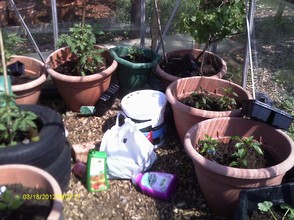
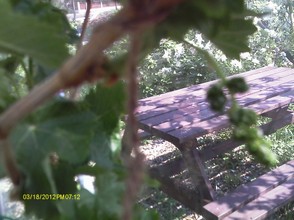






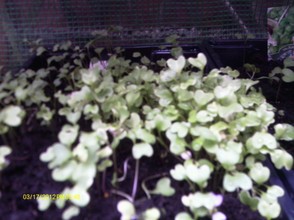
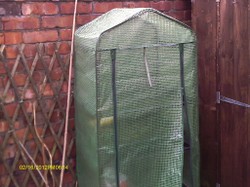

 Pilgrimage. A review29 days ago
Pilgrimage. A review29 days ago
 Leo the Fourteenthon 05/09/2025
Leo the Fourteenthon 05/09/2025
 The Melsonby Hoardon 03/25/2025
The Melsonby Hoardon 03/25/2025


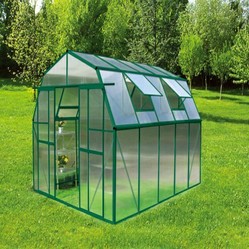
Comments
Utility poles are an American custom, we do not have them in Britain.
Thank you for your comment below in answer to my previous observation and question.
Unitedstatesian utility poles these days host nailed notices advertising certain services such as house-washing and indicating certain traffic-flow information, such as stopping-points for unmarked pedestrian walk-ways to be respected.
Is the British Isles-er utility pole ever host to such notices?
The Scot's pine
Thank you for your comment below in answer to my previous observation and question.
Online sources agree in Southern yellow pine (Pinus palustris) as the Unitedstatesian choice species even as there are such competitors as Douglas fir (Pseudotsuga menziesii), jack pine (Pinus banksiana), lodgepole pine (Pinus contorta), Pacific silver fir (Abies amabilis) and western red cedar (Thuja plicata).
Is there a particular British-Isles-er pine species or will any one do?
Poles tend to be pinewood.
Thank you for your comment below in answer to my previous observation and question.
Growing up I never came across utility poles covered with official and unofficial, private and public notices, such as "Sell that junk car!" and "Stop here, not just before crosswalk!" Such examples as the former and the latter now can be discerned perhaps in every other block of utility poles nowadays.
Does the electrical system in the British Isles employ staggered poles, between which extend above-ground electric lines (which resting birds sometimes favor over tree branches)?
If so, is the pole of metal or wood? If so, might the pole matter as a notice post such as the Unitedstatesian orientation above?
Occasionally.
Thank you for your comment below in answer to my previous observation and question.
Recent storms this summer caused temporary power outages. Does that ever happen with the allotment regardless of lighting arrangement or might just certain arrangements be susceptible to outage?
My greenhouse is a basic design and my allotment site has only just acquired electricity, so I do not use supplemental lighting. I grow at the moment: tomatoes, an eggplant, peppers, a grape vine and courgettes. I am getting another greenhouse when a friend moves on to another allotment, but that will not have supplemental lighting.
frankbeswick, Thank you! Do you just not grow in your greenhouse the plants that have a need for some periods of darkness or for supplemental lighting?